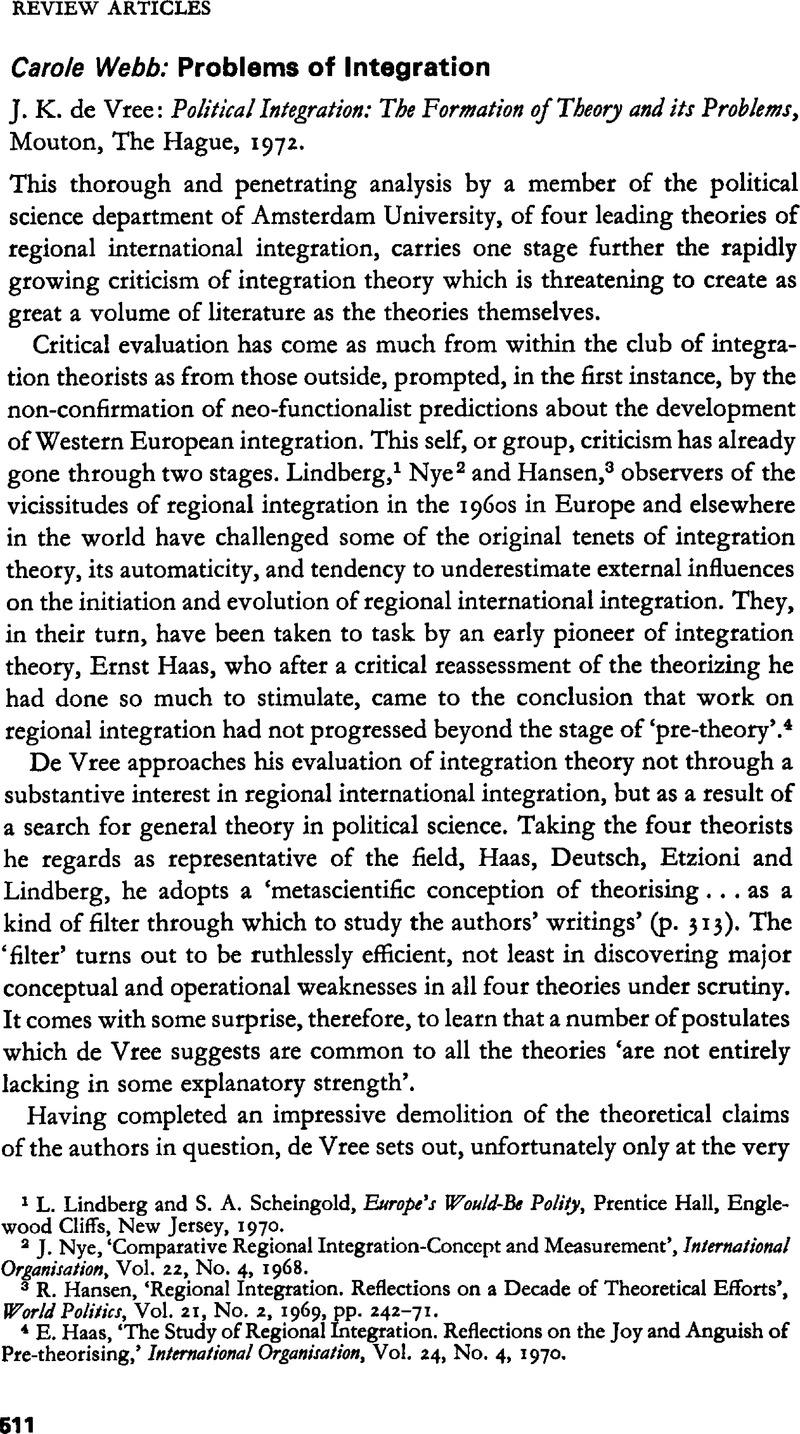
1 Lindberg, L. and Scheingold, S. A., Europe's Would‐Be Polity, Prentice Hall, Engle‐wood Cliffs, New Jersey, 1970 Google Scholar.
2 Nye, J., ‘Comparative Regional Integration‐Concept and Measurement’, International Organisation, Vol. 22, No. 4, 1968 CrossRefGoogle Scholar.
3 Hansen, R., ‘Regional Integration. Reflections on a Decade of Theoretical Efforts’, World Politics, Vol. 21, No. 2, 1969, pp. 242–71CrossRefGoogle Scholar.
4 Haas, E., ‘The Study of Regional Integration. Reflections on the Joy and Anguish of Pre‐theorising,’ International Organisation, Vol. 24, No. 4, 1970 CrossRefGoogle Scholar.
5 Ake, C., A Theory of Political Integration, The Dorsey Press, 1967 Google Scholar.
6 Galtung, J., ‘A Structural Theory of Integration’, Journal of Peace Research, Vol. 5, No. 4, 1968 CrossRefGoogle Scholar.
7 C. Ake, ibid., p. 8. Where he discusses empirical indicators of integration. ‘Legitimacy score ‐ the extent to which citizens identify with the state as an embodiment of their interests and therefore concede that it deserves their loyalty and the authority to exercise certain powers over them.’